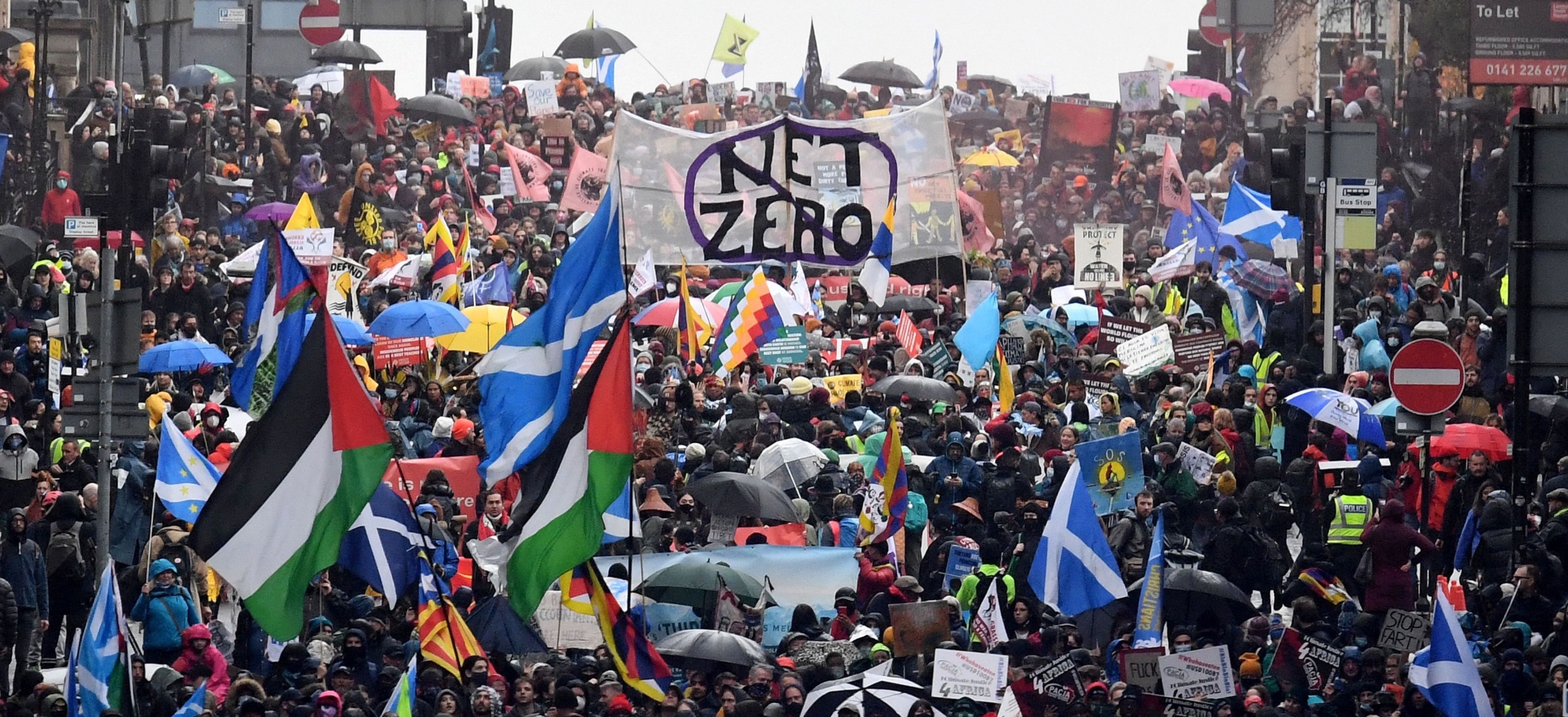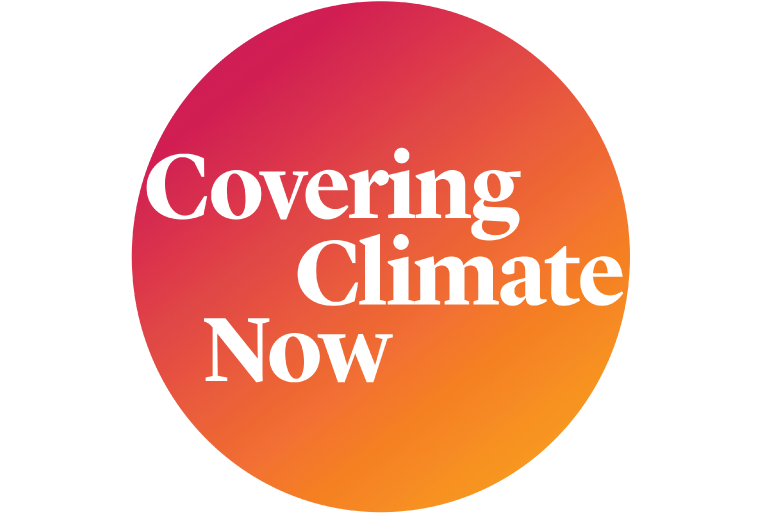This story is part of Covering Climate Now, a global journalism collaboration co-founded by CJR and The Nation strengthening coverage of the climate story. The author is CCNow’s deputy director.
IN JANUARY, WE WROTE in this column, “Humanity begins 2021 with a real chance to pull back from the brink of climate catastrophe.” In the United States, then-President-elect Joe Biden promised bold climate legislation at home and renewed climate leadership globally. Elsewhere, dozens of countries had declared a “climate state of emergency,” while still others, including China, were ramping up commitments to slash emissions. In the business world, one after another, banks and financial institutions pledged to divest from dirty energy. Steps to limit global heating to 1.5 degrees Celsius — urgently needed to fend off the worst climate impacts, but stymied for four years by a climate-denying US administration — felt within reach.
On many counts, since then, 2021 has frustrated. The US is still waiting on that climate legislation — desirable as a matter of science and survival, not of partisan politics — which until now has been held up by lockstep Republican opposition and the dissembling of a single West Virginia Democrat. On the world stage, November’s COP26 summit in Glasgow, Scotland, a critical juncture in the climate fight, delivered better on rhetoric than on action; countries’ pledges there fell well short of United Nations targets, and questions of justice for developing countries, which are least responsible for climate change but often first to bear its burdens, were mostly shrugged off by their wealthier peers.
The result is that 2021 amounts to a missed opportunity, even as the physical consequences of climate change grow ever more harrowing and obvious.
Yet hope, however feeble, springs eternal, and journalists have a role to play if 2022 is to be any better. Leaders at COP26 did not muster sufficient will to meet the 1.5 degrees C target — the summit left humanity on track for a disastrous 2.4 degrees C of warming by the end of this century — but a late inclusion in the Glasgow Climate Pact does compel countries to return to the table next year, at COP27 in Sharm el Sheikh, Egypt, with improved climate plans (whereas, under 2015’s Paris Agreement, updates were only expected every five years). In this way, COP leadership claimed to have “kept 1.5 alive.” Accountability will be key moving forward, and that is where journalists come in.
Critically, all COP pledges are voluntary and non-binding. That 2.4 degrees C projection, then, in fact represents a best-case scenario in which countries all follow through on their stated plans — unlikely, given the broken promises that mark the climate story so far (the US withdrawal from the Paris accord during the Trump administration being only one example). How countries integrate new emissions-reduction commitments into their domestic climate programs, how they plan to advance those commitments in time for COP27 next November, and whether such advancements square with climate science are all important questions journalists must ask in the months ahead.
Ambition, though, is the easy part. How and whether countries execute on that ambition is more important — and more complicated. As with any large policy, climate action will be characterized by struggle; results are likely to diverge from intent. In the US, for example, should Democrats finally pass significant climate legislation, much of the resulting funding will be administered through federal grants. Competition between local governments will be fierce — indeed, it’s well underway vis-à-vis the $1.2 trillion infrastructure package Biden signed into law in November — and in those municipalities that obtain funds a motley array of governmental and nongovernmental actors will compete to implement them. Powerful interests along the way will jockey to delay or benefit from change. In the meantime, what this all entails for emissions reduction — never mind important questions of justice and the economy in the relevant communities — might easily get lost in the scrum. It’s on journalists everywhere to follow the action and ensure it isn’t.
Then there’s the matter of accuracy. Reaching 1.5 degrees C is still possible, but doing so will require, among other things, precise emissions accounting across the globe. In this regard, a pathbreaking Washington Post investigation this November did not inspire confidence: Drawing on many years of data submitted to the UN by 196 countries, the Post showed that there’s an enormous gap between what countries say they’re releasing into the atmosphere and what they actually emit. The gap is enough to substantially alter the planet’s overall warming — and it means the data on which countries are basing their climate pledges is fundamentally flawed.
Post journalists discovered that much of the data countries report to the UN has been incomplete or plainly inaccurate. Accounting tricks have also been common: Countries are allowed, for instance, to subtract from their total emissions carbon that supposedly is absorbed by land and forests within their borders — but they often do so erroneously, claiming outlandish levels of carbon absorption or absorption that isn’t happening at all.
The Post’s investigation was extensive and thorough; to more accurately determine countries’ emissions, the reporting team built a world-spanning data set, employed statistical models to estimate emissions where data were absent, and called on many experts to help guide their efforts. There’s plenty of room for journalists in newsrooms big and small to carry this accountability work forward.
“Our data is only really a starting point, because it can suggest discrepancies but you really have to figure out why they exist and what’s actually going on [in these countries],” Chris Mooney, a reporter on the Post story, told me. Similar investigations can also be tackled in local outlets around the world. “Knowing what’s likely to be missed … and then getting scientific help to analyze what’s going on in your backyard — that’s the blueprint,” Mooney said.
Journalistic accountability alone cannot necessarily compel governments to do better. In democratic countries, at least, public pressure on leaders to follow through on and improve their climate pledges is essential. But let’s be real: As important as emissions policies are, they’re too wonky to connect with many news consumers. And so, journalists must continue to emphasize people’s lived experience of the climate emergency — increasingly dramatic and deadly, as humanity careens towards 1.5 degrees C — while drawing a clear connection to the policies that are helping or not.
Although the door would seem to be closing on 1.5 degrees C, science is clear that if humanity acts fast to curb emissions, temperature rise will also stop quickly. And climate solutions remain ready at hand. “That means there is always hope,” Alex Thomson, of Channel 4 in the UK, said during a recent Covering Climate Now webinar. “And the worst thing that journalists can possibly ever do is engender despair.” Which is to say that in 2022 hope must undergird all of our journalistic efforts, even and especially as we hold the powerful to account.




